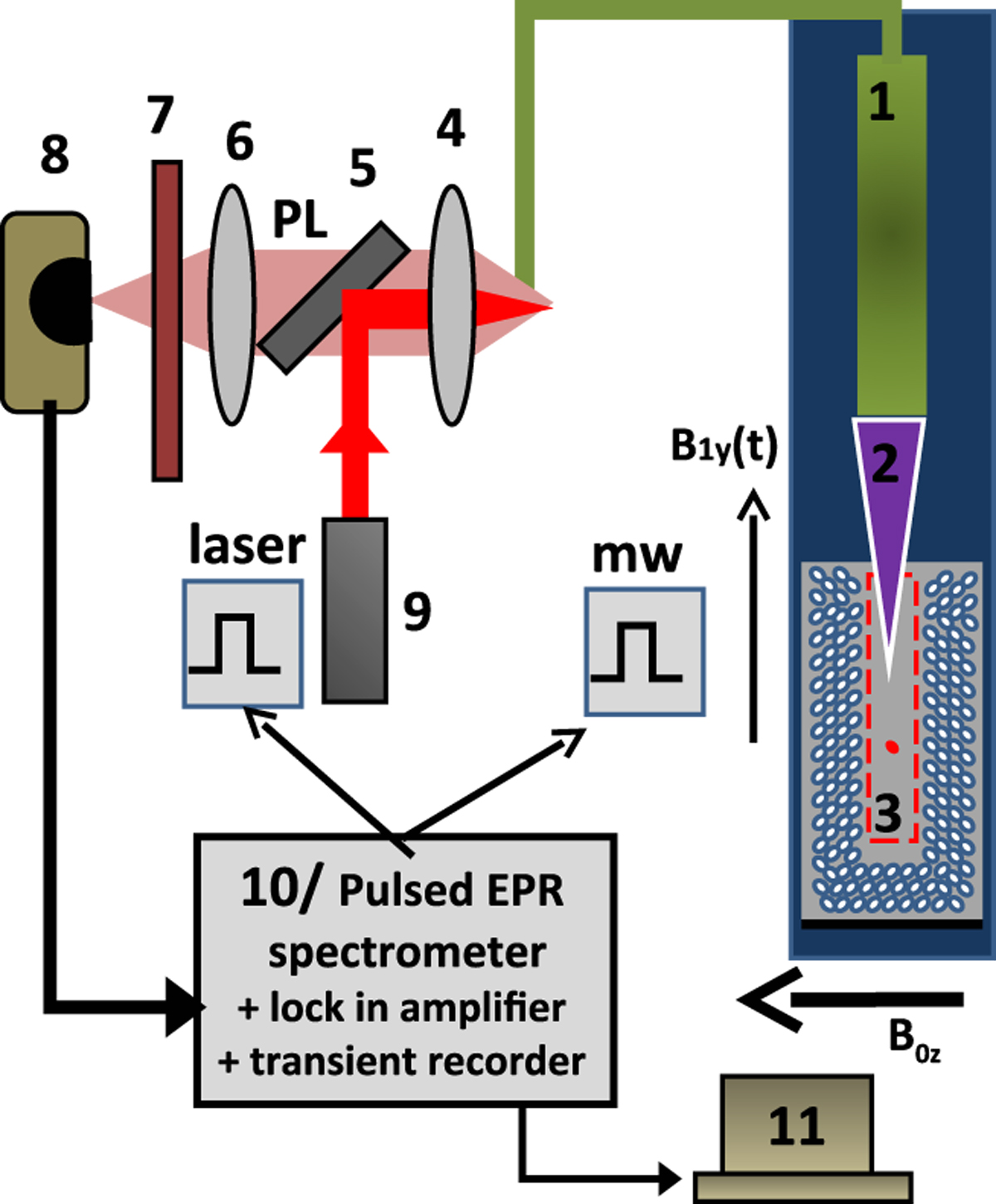Fig. 2

Download original image
A laser (9) at 785 nm can conveniently excite the photoluminescence (PL) of the single V2 spin probe through a dichroic miror (5), the optical fiber (1), the optical coupler (2) and the 1D photonic waveguide of the SiC-YIG quantum sensor (3). The PL is then collected by the same path in the reverse direction till the dichroic miror, and then it is filtered (7) before being send to the time gated sensitive photodetector (8), either a gated photomultiplier tube or a gated avalanche photodiode, having single photon counting capabilities. The photodetector signal, which is proportionnal to the photoluminescence signal, has then to be sent in a voltage form to the pulsed EPR spectrometer input channel of the transient recorder. Microwave pulses at two different frequencies are fabricated by the pulsed EPR/ELDOR spectrometer (10) and synchronized with a triger voltage pulse used to pulse the exciting laser, when necessary. For the much simpler ODMR experiments requiring a single microwave frequency, a Si photodiode can be used for PL detection and its voltage signal send to a lock in amplifier. (4) and (6) are short focal lenses or objectives. Static field B0 and microwave magnetic field B1 are perpendicular. The pulsed EPR resonator is inside a standard pulsed EPR cryostat (4–300 K).
Current usage metrics show cumulative count of Article Views (full-text article views including HTML views, PDF and ePub downloads, according to the available data) and Abstracts Views on Vision4Press platform.
Data correspond to usage on the plateform after 2015. The current usage metrics is available 48-96 hours after online publication and is updated daily on week days.
Initial download of the metrics may take a while.


